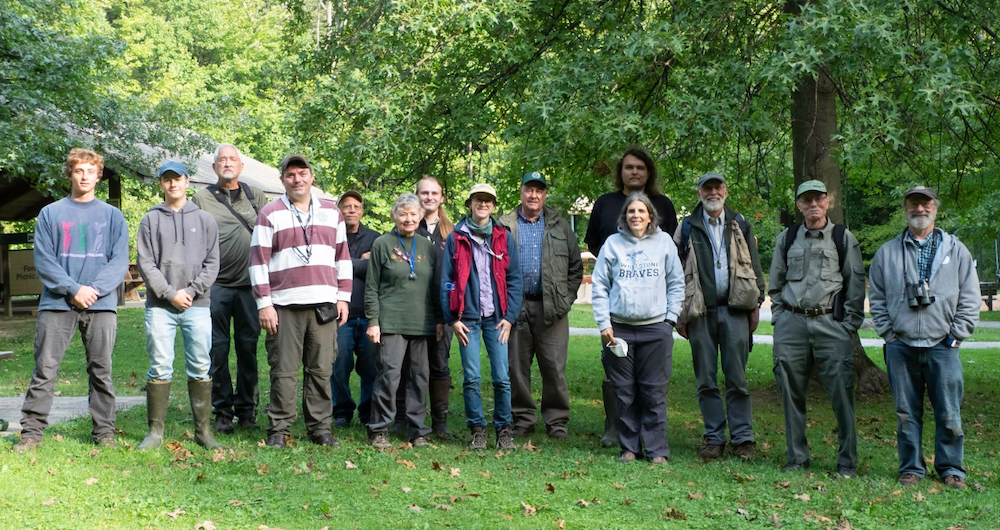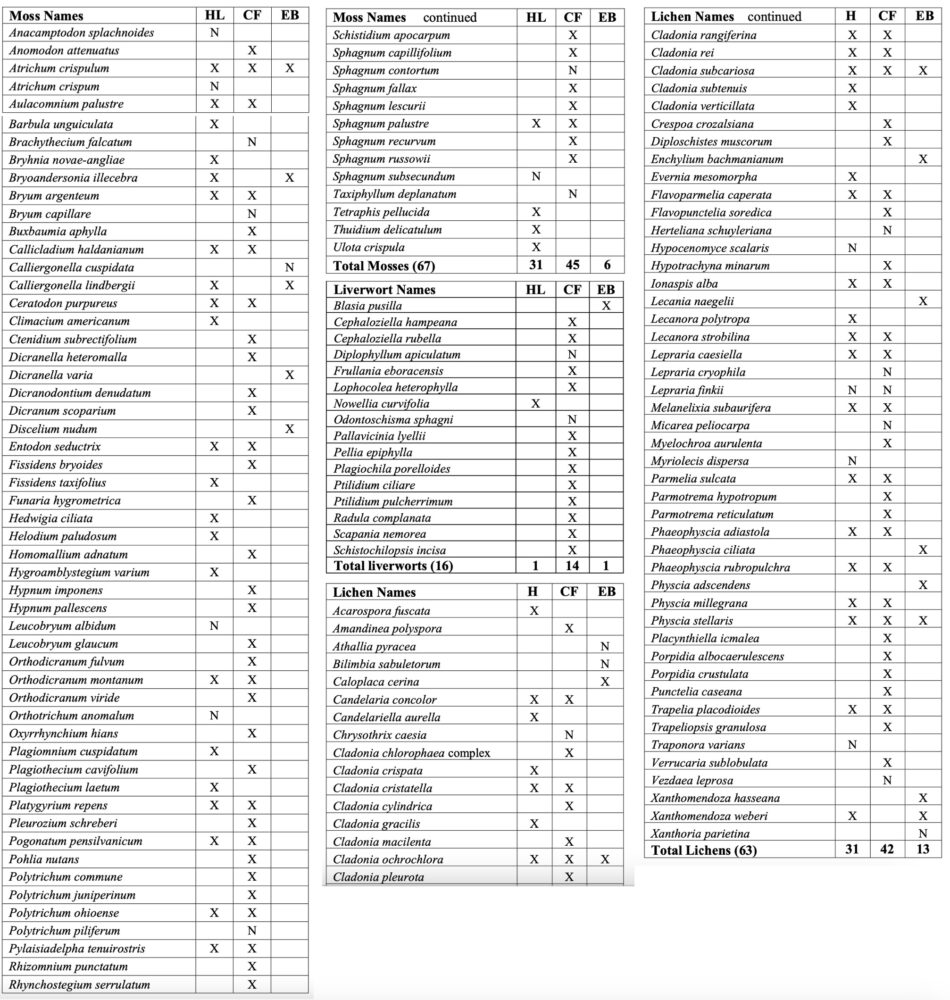Fall Foray to Lake County
September 24-26, 2021

Fall foray group L to R: Tomás Curtis, Chris Poling, John Pogacnik, Tom McCoy, Bill Schumacher, Barb Andreas, Joshua Copen,Megan Osika, Ian Adams, Shaun Pogacnick, Carole Schumacher, Bob Long, Dean Porter, Bob Klips — photo by Bob Klips
The 2021 OMLA Fall Foray was held in northeastern Ohio’s Lake County. We were hosted by the Lake County Metroparks, of which we are appreciative for giving us permission to collect on their preserves, and for the use of the Environmental Learning Center.
Our principal guides for the 3-day event were John Pogacnik and Shaun Pogacnik. We visited 3 sites: (1) Hidden Lake Metropark (HL), where our main exploration spot was a swamp forest and adjacent open meadow best known as home to a terrific colony of Cladonia lichens; (2) Chapin Forest Reservation (CF) where the featured ecosystem was a low-lying abandoned sand quarry where pockets of standing water interrupted by sandy soil mounds support populations of various Sphagnum mosses as well as bryophytes and lichens of open nutrient-poor spots; and (3) Erie Bluffs Metropark (EB), featuring an eroding bluff high above Lake Erie that is home to some great rarities.
Prior to the 2021 foray to Lake County, 161 mosses had been recorded for the county, of which 114 were specimen records, and the remaining 47 literature records only according to the OMLA moss atlas that was updated in 2020. Comparable OMLA-derived statistics are not available for liverworts, but the online aggregation of records of specimens housed in member herbaria of the Consortium of North American Bryophyte Herbaria shows 50 species. Lichen-wise, there are 77 macrolichens reported from Lake County many of which (41) are recent, having been collected or observed since 2016.
Sixty-seven mosses, 14 liverworts, and were 63 lichens (including both macrolichens and crustose forms) were collected or observed on the foray dates and on a separate supplementary outing made in mid-December by individual OMLA members.
Noteworthy mosses include the spectacularly rare and distinctive “bug on a stick” moss, Buxbaumia aphylla seen at Chapin Forest reservation. One of the few mosses to have a persistent protonema, the gametophyte stage is essentially leafless. As if to make up for that diminutiveness though, the sporophyte is topped with a massive and oddly-shaped capsule (the “bug”). Another rarity, which coincidentally also has a persis- tent protonema, naked flag moss, Discelium nudum, is the only species within its family, the Disceliaceae. It was seen on sandy ground at Erie Bluffs Metro Park. Liverworts to write home about include northern naugehyde liverwort, Ptilidium ciliare, a larger more upright species than the similar and more common tree fringewort, P. puncherrimum; both were seen on the ground at Chapin Forest. Lichens that were special to see include (at Chapin) cowpie lichen, Diploschistes muscorum, a species that, at least early in its life, is parasitic on various Cladonia species. And speaking of Cladonia species, there were a great many of them seen at the open meadow at Hidden Lake; these were the topic of a beautifully illustrated and informative article by Ian Adams, Tomás Curtis, & John Pogacnik in the 2020 OBELISK. An especial highlight was the very rare C. gracilis subsp.turbinata.
Bryophytes and lichens recorded during the 2021 Fall Foray in Lake County and later visits by individual OMLA members. N=new for Lake County.

